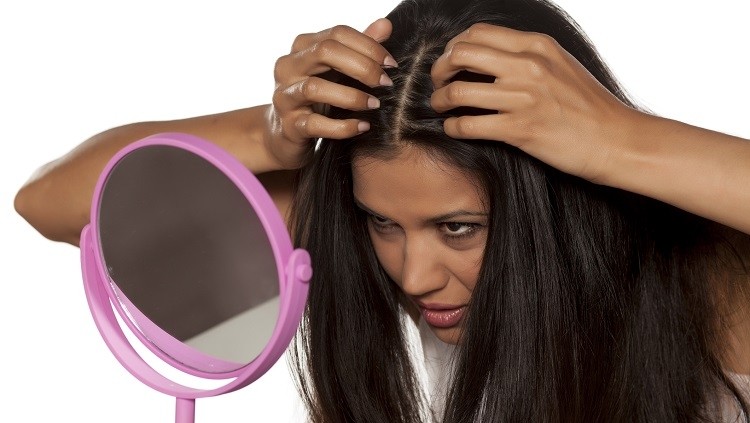5 hair and scalp ingredient launches you may have missed

Here Cosmetics Design curates a selection of new-to-market hair and scalp care ingredients.
Newly launched ingredients for styling and volumizing hair
The newest ingredient under the MIRASIL brand from Elkem is called Mirasil DM2. It’s a volatile dimethicone that the multinational maker of silicones and silicon describes as an “emollient of choice for super light, fast drying, high spreading and smooth feel,” with applications in and beyond hair styling.
DSM launched a new hair volumizing ingredient this month called Tilamar Boost 150. The unique hyperbranched polymer (INCI name Polyquaternium-110) promises hair volumizing and increased hair elasticity benefits and shows conditioning comparable to that of “traditional” polymers, according to the DSM product page on the new ingredient.
Tilamar Boost 150 also makes an “invisible transformation of the polymer on the hair fiber to create the volume with an extra touch of care,” starting in a lamellar phase and transitioning to a hexagonal phase as it dries.
The latest ingredients for scalp care
Early this month, GreenTech launched a new ingredient called Hairiline that works to modulate scalp microbiota and in turn help manage alopecia.
According to information GreenTech shared with Cosmetics Design, “HAIRILINE reduces the C. acnes / S. epidermidis ratio, which is strongly increased in the case of alopecia, causing micro-inflammation. Besides, it rebalances the M. globosa and M.restrica ratio.” And the company’s own user-satisfaction data shows “77% observed a slowing down of hair loss while 81% noted an acceleration of hair growth.”
On Monday, Symrise introduced Crinipan PMC green to the scalp care ingredient market. The new antidandruff input is said to be comparable to climbazole.
Malassaezia, the microorganism that often causes dandruff activates Crinipan PMC green. This mode of action / delivery along with the ingredient’s being bio-based are what Symrise believes will make it stand out.
“Developing green products like Crinipan PMC green is in line with the Symrise corporate sustainability strategy,” Dr. Florian Genrich, Senior Global Product Manager Skin Protection at Symrise, tells the press. “In future we are going to continue our path of developing more and more natural ingredients to serve our customers’ and consumers’ needs.”
Croda’s latest scalp care ingredient is Phytessence Hazel Leaf. The ingredient is for applications such as both leave-on and rinse-off hair conditioners, for scalp treatment products, and for shampoo.
According to the company’s product page, Phytessence Hazel Leaf “demonstrates a firming effect by increasing the expression of collagen VII within the cells. [And it,] also exhibits antioxidant and soothing properties. it is able to reduce the production of ROS and the [release] of Interleukine 6.”
And newly published data on the efficacy of pea sprout extract to treat hair loss
Mibelle Biochemistry’s AnaGain ingredient for hair-loss reduction isn’t new. It launched to the personal care ingredient market in late 2018. What is new is data published in the February 2020 issue of Phytotherapy Research, a peer-reviewed scientific journal from Wiley.
In the journal, three Mibelle scientists—Torsten Grothe, Franziska Wandrey, Cornelia Schuerch—published a short item called ‘Clinical evaluation of pea sprout extract in the treatment of hair loss’. The study behind their article looked at both topical application and ingestion of pea sprout extract.
As they write in the abstract, “Our study has now shown that the application of a fluid containing 2% pea sprout extract on a defined scalp zone of 10 volunteers enhances the expression of defined genes relevant for hair, namely fibroblast growth factor‐7 (FGF7) and noggin, by 56 and 85%, respectively.” Find the full Phytotherapy Research item online here.
---
Deanna Utroske follows cosmetics and personal care ingredient launches with great interest.
Hers is a leading voice in the cosmetics and personal care industry as well as in the indie beauty movement. As Editor of CosmeticsDesign.com, she writes daily news about the business of beauty in the Americas region and regularly produces video interviews with cosmetics, fragrance, personal care, and packaging experts as well as with indie brand founders.
CLICK HERE to read about Deanna’s approach to newsgathering and communication during COVID-19, as recently featured on Publishing Executive.








![HairRevive [MM+Zn] plant shell, to rejuvenate the hair and scalp](/var/wrbm_gb_food_pharma/storage/images/_aliases/news_teaser/publications/cosmetics/cosmeticsdesign.com/product-innovations/hairrevive-mm-zn-plant-shell-to-rejuvenate-the-hair-and-scalp/16280155-5-eng-GB/HairRevive-MM-Zn-plant-shell-to-rejuvenate-the-hair-and-scalp.jpg)








